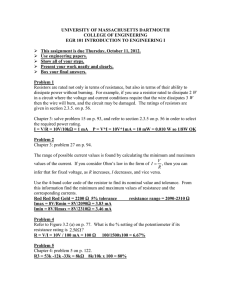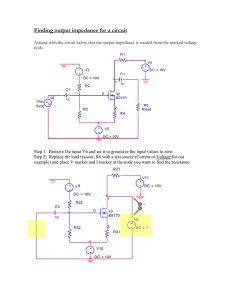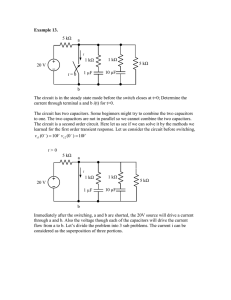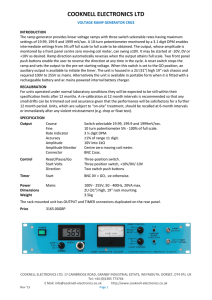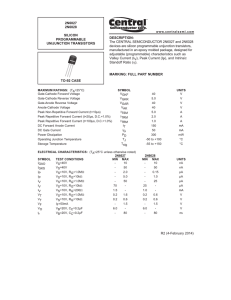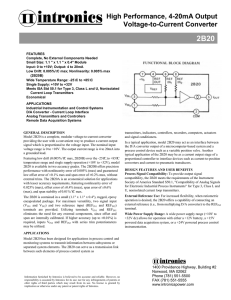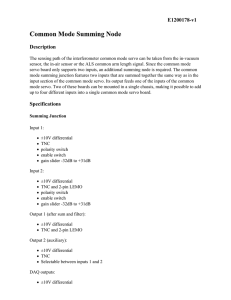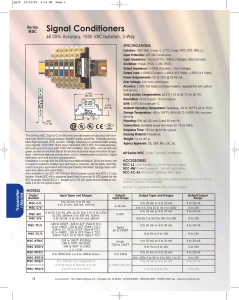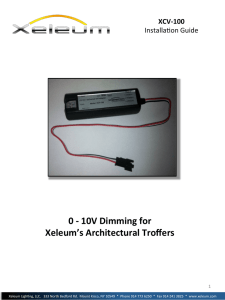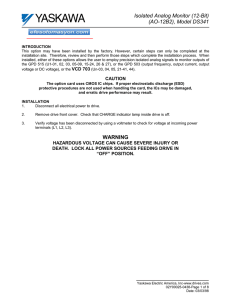1 The four capacitors are connected to a 10 Volt battery. The
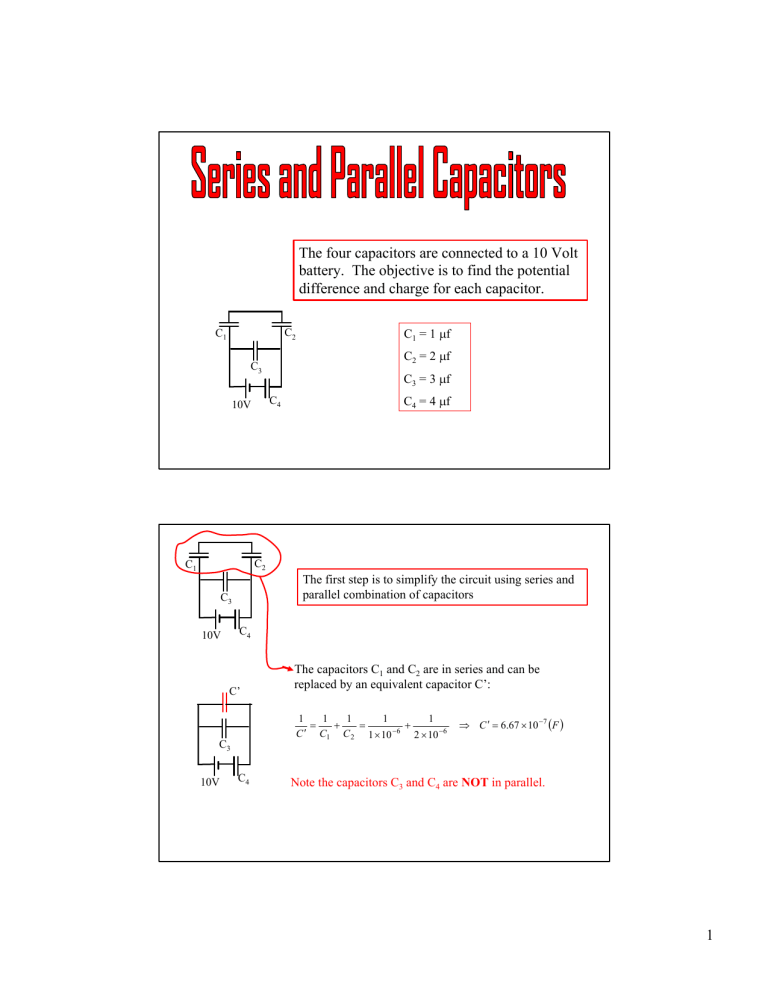
C
1
C
3
10V
C
4
C
2
The four capacitors are connected to a 10 Volt battery. The objective is to find the potential difference and charge for each capacitor.
C
1
= 1
µ f
C
2
= 2
µ f
C
3
= 3
µ f
C
4
= 4
µ f
C
1
C
3
10V
C
4
C
2
The first step is to simplify the circuit using series and parallel combination of capacitors
C’
C
3
10V
C
4
The capacitors C
1 and C
2 are in series and can be replaced by an equivalent capacitor C’:
1
C
′
=
1
C
1
+
1
C
2
=
1
1
×
10
−
6
+
2
1
×
10
−
6
⇒
C
′ =
6 .
67
×
10
−
7
Note the capacitors C
3 and C
4 are NOT in parallel.
1
C’
C
3
10V
C”
C
4
C’ and C
3
C”: are in parallel and can be replaced by
C
′′ =
C
3
+
C
′ =
3 .
67
×
10
−
6
10V
C
4
C’’’
The capacitors C
4 and C” are in series and can be replaced by C’’’:
C
1
′′′
=
1
C
4
+
1
C
′′
⇒
C
′′′ =
1 .
91
×
10
−
6
10V
C’’’
We work backwards to find the charges on the capacitors:
10V
The potential difference across C’’’ is 10 V and the charge is:
Q
′′′ =
C
′′′ ∆
V
=
1 .
91
×
10
−
5
C”
10V
C
4
Since C
4 and C’’ are in series they have same charge as C’’’:
Q
4
=
1 .
91
×
10
−
5 and
∆
V
4
=
Q
4
C
4
=
4 .
78
( )
The potential across C’’ is:
∆
V
′′ =
Q
C
′′
′′
=
Q
C
′′′
′′
=
1 .
91
×
10
−
5
3 .
67
×
10
−
6
=
5 .
20
2
C
1
10V
C
3
C
3
C’
C
4
The capacitor C” replaced C’ and C
3 which are in parallel. The potential across C’ and C
3 must be the same as across C” which is 5.20 V. The charges on C’ and C
3 are:
Q
′ =
C
′ ∆
V
′ =
6 .
67
×
10
−
7 =
3 .
47
×
10
−
6
Q
3
=
C
3
∆
V
3
=
3
×
10
−
6 =
1 .
56
×
10
−
5
C
2
Since C
1 and C
2 are in series they both have the same charge as C’:
Q
1
=
Q
2
=
3 .
47
×
10
−
6
10V
C
4 The potential differences are:
∆
V
1
=
Q
1
C
1
=
3 .
47
( ) and
∆
V
2
=
Q
2
C
2
=
1 .
74
3
